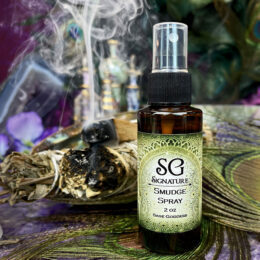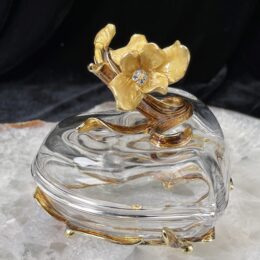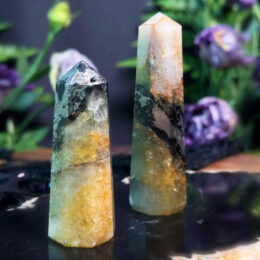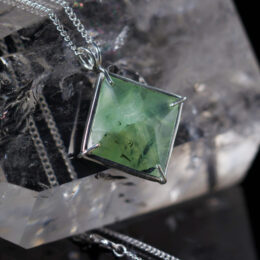Your cart is currently empty!
Serpentine Guide: Properties and Meaning

Serpentine Properties
Color: GreenMohs Hardness: 2.5-4Chakra: Heart chakra.Crystal Structure:Monoclinic.Location: Italy, Russia, United States
About Serpentine
Serpentine is a powerful stone that holds immense spiritual and healing properties. It awakens Kundalini energy and cultivates passion within individuals. Resonating with the element of earth, Serpentine has a magical influence over all 7 chakras. It is associated with ancient wisdom and a deep connection to nature, making it a popular choice for those seeking spiritual growth and enlightenment. The color of Serpentine varies from light green to dark green, and it is often used in meditation and healing practices to aid in sexual healing and promote overall well-being.
The history of Serpentine
Serpentine has a rich history that dates back centuries. It has been revered by various ancient civilizations for its mystical properties and connection to the earth. In ancient Egypt, Serpentine was used in jewelry and amulets, believed to bring protection and ward off evil spirits. It was also used in ancient Greece and Rome for its healing properties and was associated with the goddess of wisdom, Athena. Native American tribes considered Serpentine as a sacred stone, using it in rituals and ceremonies to connect with the spirit world. Throughout history, Serpentine has been highly valued for its ability to enhance spiritual experiences and promote a deeper understanding of oneself and the world around us.
What are Serpentine healing properties?
Serpentine is a powerful stone that awakens Kundalini energy and cultivates passion. It holds magic over all 7 chakras and resonates with the element of earth. Serpentine is associated with ancient wisdom and connection to nature, making it a popular choice for those seeking spiritual growth and enlightenment. Its chakra is the heart chakra, which is responsible for love, compassion, and emotional balance. The color of Serpentine varies from light green to dark green, and it is often used in meditation and healing practices to aid in sexual healing and promote overall well-being.
What are Serpentine Metaphysical / Spiritual Properties?
Serpentine is a powerful stone that awakens Kundalini energy and cultivates passion. It holds magic over all 7 chakras and resonates with the element of earth. Serpentine is associated with ancient wisdom and connection to nature, making it a popular choice for those seeking spiritual growth and enlightenment. Its chakra is the heart chakra, which is responsible for love, compassion, and emotional balance. The color of Serpentine varies from light green to dark green, and it is often used in meditation and healing practices to aid in sexual healing and promote overall well-being.
Serpentine FAQ
What is Serpentine used for?
Serpentine is used for a variety of purposes. It is commonly used as a decorative stone in jewelry and carvings due to its unique green color and interesting patterns. It is also used in architecture and construction for its durability and resistance to weathering. In addition, Serpentine has healing properties and is used in alternative medicine for its ability to promote emotional balance and spiritual growth.
What does Serpentine do?
Serpentine has a range of metaphysical properties. It enhances meditation and spiritual exploration, helping individuals connect with their inner selves and higher consciousness. Serpentine also promotes emotional healing and balance, releasing negative energy and promoting a sense of calm and tranquility. Additionally, it stimulates the flow of energy throughout the body, promoting physical well-being.
Can Serpentine go in water?
Serpentine is generally safe to be placed in water. However, it is important to note that some varieties of Serpentine may contain trace amounts of toxic minerals, such as asbestos. Therefore, it is recommended to research the specific type of Serpentine you have before submerging it in water. If you are unsure, it is best to err on the side of caution and avoid placing Serpentine in water.
How to cleanse Serpentine?
To cleanse Serpentine, you can use several methods. One common method is to rinse the stone under running water, visualizing any negative energy being washed away. Another method is to place the Serpentine in a bowl of saltwater or bury it in the earth for a few hours to absorb any negative energy. You can also cleanse Serpentine by smudging it with sage or placing it in sunlight or moonlight for a few hours.
What does Serpentine do spiritually?
Serpentine has several spiritual benefits. It enhances spiritual exploration and meditation, helping individuals connect with their higher selves and the spiritual realm. Serpentine also promotes emotional healing and balance, assisting in the release of negative energy and promoting a sense of inner peace. Additionally, it stimulates the flow of energy throughout the body, aligning the chakras and promoting spiritual growth.
How to clean Serpentine?
To clean Serpentine, you can simply wipe it with a soft cloth or use a mild soap and water solution. Avoid using harsh chemicals or abrasive cleaners, as they can damage the stone. After cleaning, make sure to rinse the Serpentine thoroughly and dry it with a soft cloth. It is also recommended to periodically cleanse and recharge Serpentine to maintain its energetic properties.
How to spot fake Serpentine?
Spotting fake Serpentine can be challenging, as it can come in various forms and colors. However, there are a few indicators to look out for. Genuine Serpentine typically has a smooth and polished surface, while fake Serpentine may have rough edges or an uneven texture. Additionally, genuine Serpentine will have a distinct green color, while fake Serpentine may have an unnatural or inconsistent coloration. It is always best to purchase Serpentine from reputable sources to ensure its authenticity.
Is Serpentine toxic?
Serpentine itself is not toxic. However, certain varieties of Serpentine may contain trace amounts of toxic minerals, such as asbestos. These minerals can be harmful if inhaled or ingested. Therefore, it is important to handle Serpentine with care and avoid creating dust or particles when working with it. If you are unsure about the specific type of Serpentine you have, it is best to consult with a professional or avoid prolonged exposure.
Where is Serpentine found?
Serpentine is found in various locations around the world. It is commonly found in regions with geological activity, such as areas with volcanic or metamorphic rocks. Some notable sources of Serpentine include the United States, Italy, Russia, China, and Australia. Each location may produce Serpentine with unique characteristics and colors, making it a sought-after gemstone for collectors and jewelry enthusiasts.
How is Serpentine pronounced?
Serpentine is pronounced as “SUR-puhn-teen.” The emphasis is placed on the first syllable, with a short “u” sound. It is important to note that pronunciation may vary slightly depending on regional accents and dialects.
What chakra is associated with Serpentine?
Serpentine is primarily associated with the heart chakra. It opens and activates the heart chakra, promoting love, compassion, and emotional healing. Serpentine also stimulates the flow of energy throughout the body, helping to balance and align all the chakras.
Can Serpentine be in the sun?
Serpentine can be safely placed in the sun. In fact, sunlight is often used as a method to cleanse and recharge Serpentine. However, prolonged exposure to direct sunlight may cause the color of Serpentine to fade over time. Therefore, it is recommended to limit the amount of time Serpentine is exposed to direct sunlight to preserve its natural beauty.
How to charge Serpentine?
To charge Serpentine, you can place it in sunlight or moonlight for a few hours. The energy from the sun or moon will infuse the stone, enhancing its metaphysical properties. You can also charge Serpentine by placing it on a bed of quartz crystals or using other crystals known for their charging abilities, such as selenite or amethyst. Visualizing the stone being filled with positive energy can also help in the charging process.
What is the hardness of Serpentine?
Serpentine has a hardness ranging from 2.5 to 5.5 on the Mohs scale. This means that it is relatively soft compared to other gemstones and minerals. As a result, Serpentine should be handled with care to avoid scratches or damage. It is recommended to store Serpentine separately from harder gemstones to prevent any potential abrasion.













